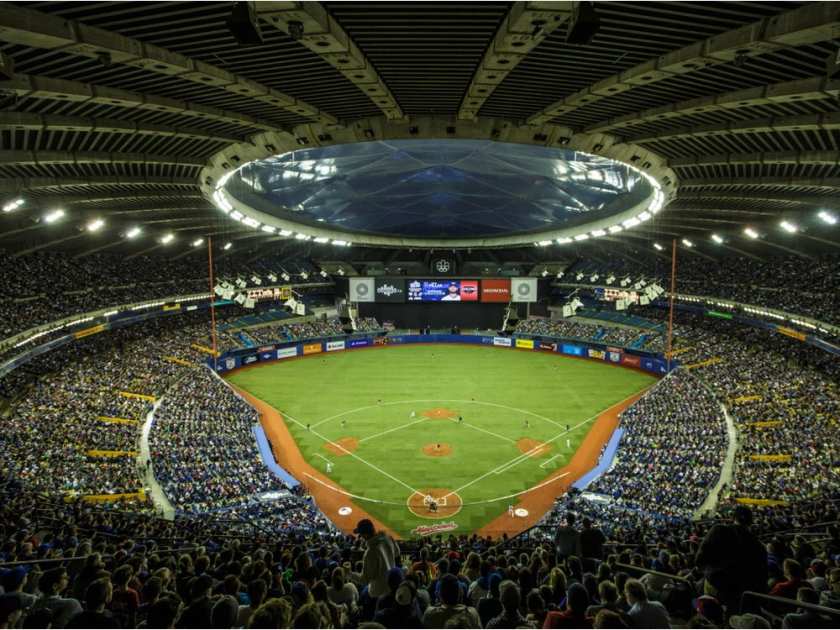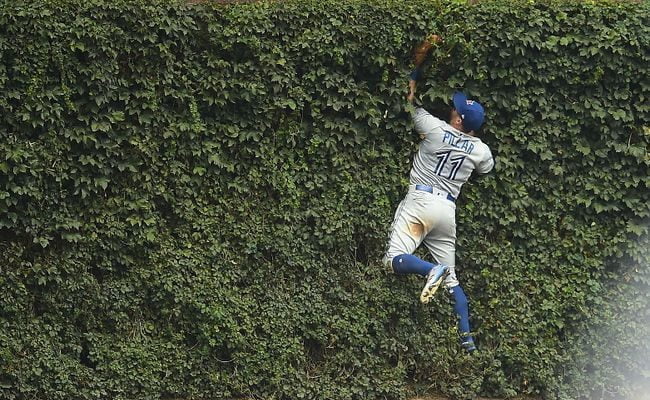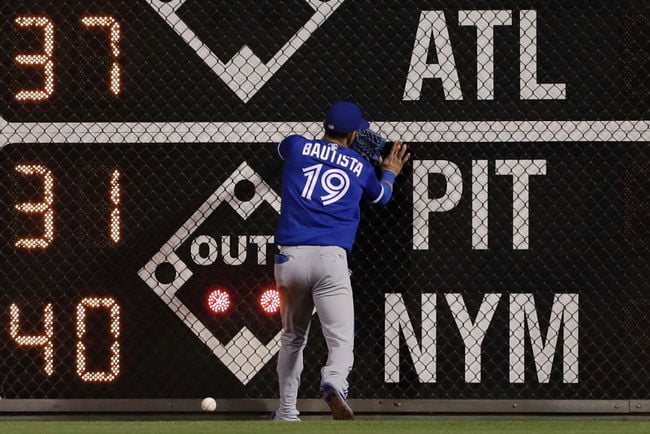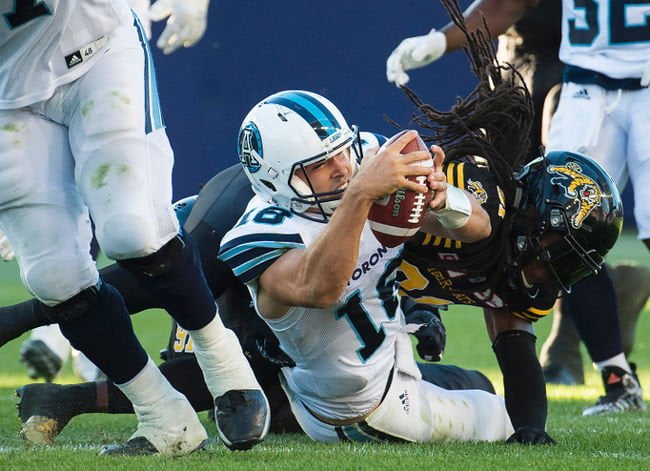Montreal Olympics: Most Facilities Built for 1976 Games Still Open

Montreal experienced a sports building boom before the Olympics.
After all the medals were handed out, the city was left with an abundance of world-class facilities. Many had been built wildly over-budget. The inquiry into Olympic cost over-runs found one facility to be a “real white elephant” and another of “an extravagance without any relation to the Olympic requirements or the city’s needs after the Games.” Use of the most expensive building – the trouble-plagued Olympic Stadium – is limited in winter due to safety concerns.
Here’s a look the key venues for the 1976 Montreal Games and how they are being used today.
Olympic Stadium
Olympic use: The centrepiece of the Montreal Games, the Olympic Stadium was used for the opening and closing ceremonies, most track and field events, the soccer finals and the equestrian Grand Prix team jumping event. Designed by French architect Roger Taillibert, the oval-shaped stadium was to have a retractable roof and tower rising obliquely above, but the roof and tower weren’t built until years later. Budgeted at $106 million in 1972, the Stadium and adjacent aquatic centre ended up costing more than $600 million by the time the Games opened, the Malouf inquiry determined in its 1980 report. That did not include the cost of the tower and roof. A retractable roof, made of Kevlar, was finally installed in 1987. But it was opened and closed a grand total of only 88 times before it was left permanently closed, due to repeated tears. It was replaced in late 1998 by a fixed fibreglass-membrane roof. In January 1999, that roof ripped, sending tonnes of snow down on workers setting up the Montreal auto show. Five people were injured. In 1991, a 55-tonne concrete beam outside the stadium broke loose and crashed onto a walkway; no one was injured. During the Games, the stadium featured permanent seating for 60,000 and space for an additional 10,000 during the Games. After the Games, the stadium was used by the Expos and the Alouettes.
Current use: Sports, concerts and other events. In 2015, it was used on 168 days and welcomed 589,000 visitors. Events included Montreal Impact soccer games, Blue Jays exhibition games, the FIFA Women’s World Cup, and AC/DC and One Direction concerts. The roof has ripped repeatedly. But authorities say they have managed to reduce the number of tears. In an August 2015 inspection, 496 rips were counted. That’s down from 1,905 found in May 2013. Use of the stadium is limited between November and April because of fears snow and freezing rain will cause rips in its fragile roof. A proposed new roof would reportedly cost $215 million. The stadium currently seats 56,000. In 2015, more than 230,000 visitors used the funicular to ride up the Big O tower and take in the view from the summit, 165 metres up. In March, the Mouvement Desjardins announced it would rent seven storeys of the tower to house 1,000 call-centre workers.
Olympic Aquatic Centre
Olympic use: Swimming competitions.
Current use: Known as the Olympic Stadium Sports Centre, the centre, nestled under the Olympic Stadium tower, reopened last year after $30 million in renovations. It features seven pools, including ones for competition, diving and synchronized swimming, as well as training gyms. The facilities are used by the public and athletes in training, and for competitions. Before the renovations began, the centre was being used by more than 300,000 people annually.

Vélodrome
Olympic use: Built next to the Olympic Stadium, the Vélodrome, designed by French architect Roger Taillibert, was used for cycling and judo competitions. Resembling a turtle shell, its dramatic, perforated roof was designed with four supports on its edges, allowing it to be completely free of interior supports. It featured 7,500 spectator seats. The building cost almost $75 million, more than four times its original budget. The Vélodrome was “an extravagance without any relation to the Olympic requirements or the city’s needs after the Games,” the Malouf inquiry into cost overruns found in 1980.
Current use: Since 1992, the building has been known as the Biodôme, a popular living nature museum that’s about to undergo a $22-million renovation. More than 800,000 people visit annually.

Maurice-Richard Arena
Olympic use: Opened in 1961, the circular building near the Olympic Stadium was used for preliminary boxing rounds and for finals in freestyle wrestling.
Current use: Renovated in 1994, the 4,800-seat arena is used for sporting events. It is Speedskating Canada’s national short-track training centre.

Pierre-Charbonneau Centre
Olympic use. Opened in 1960, the centre, adjacent to the Olympic Stadium, was used for all Greco-Roman wrestling matches during the Montreal Games.
Current use: It is now a fitness, sports and cultural facility.

Olympic Village
Olympic use: Across the street from the Olympic Stadium, the two pyramid-shaped towers housed nearly 9,000 athletes and team officials during the 1976 Games. Units in the buildings were equipped to house from five to 14 athletes. Each athlete was provided with a bed, a chest for personal belongings, a clothes rack and a lamp. The entire Village was surrounded by a high wire security fence. Originally budgeted at $30 million, the 19-storey complex ended up costing $98 million.
Current use: Rental apartments. In 2012, the 980 residential suites were sold for $176.5 million.
Olympic Basin
Olympic use: Montreal didn’t have facilities for rowing and canoeing so part of Île Notre-Dame was converted into the Olympic Basin. The basin was 2.2 kilometres long and 110 meters wide, with a depth of 2.3 meters. There was seating for 10,000, in addition to standing room for another 20,000. A three-storey concrete building housed offices for Games organizers and teams. Next door, a tower contained photo-finish equipment. The basin, which cost $25 million to build, was used “very little” after the Games and became “a real white elephant,” the Malouf inquiry into Olympic cost overruns found in 1980.
Current use: The basin is used for rowing, canoe-kayak and dragon boat training and competitions. The athletes’ quarters built for the Games are used as a training facility, with a weight room, rowing tanks and workout rooms. On Aug. 14, the basin is holding a free Olympic Initiation event for kids. Rowing and dragon-boating will be on tap.

Claude-Robillard Centre
Olympic use: Built for the Olympics, the centre featured an Olympic-sized pool for water polo and a big hall for handball competition. It also housed training facilities for field hockey, track and field, soccer, swimming and diving. Seating capacity was 4,700 for handball and 2,800 for water polo.
Current use: A major training centre, past users have included Alexandre Despatie, Émilie Heymans, Bruny Surin and Lucian Bute. The interior features a running track, tennis courts, a gymnasium, as well as facilities for gymnastics, archery, fencing, wrestling, karate, judo, bodybuilding and weightlifting, boxing, squash and racquetball. Outside, athletes can use a running track, two soccer fields and 12 tennis courts. The centre’s aquatic facilities were renovated in 2009.

Étienne-Desmarteau Centre
Olympic use: In the planning stages before the Olympics, the centre’s two ice-hockey rinks provided the perfect space for basketball competition, with seating for 5,000 spectators. It was named after a Montreal athlete who won Canada’s first Olympic gold medal — for the 25-kg weight throw at the 1904 Games in St. Louis.
Current use: Now known as the Étienne-Desmarteau Arena, it features two rinks for hockey, ringette, broomball and skating. It’s also home to Les Canadiennes, of the Canadian Women’s Hockey League.

Olympic Equestrian Centre
Olympic use: Most equestrian events were held at the Olympic Equestrian Centre in Bromont, where a dressage and jumping stadium, training and competition fields and stables were built. Seating was available for more than 15,000 spectators, with standing-room capacity on surrounding hills pegged at 20,000.
Current use: The Bromont Equestrian Olympic Park is an equestrian training and competition facility.

Paul-Sauvé Arena
Olympic use: Opened in 1960, the multi-purpose athletic facility was used for preliminary volleyball rounds for the Games (the semifinals and finals were held at the Forum).
Current use: It was demolished in the early 1990s. Residential buildings now cover the area.

The Forum
Olympic use: Opened in 1924, the Forum was home to the Montreal Canadiens at the time. For the Games, it was used for all gymnastics competitions, semifinals and finals of both basketball and volleyball, the medal rounds of handball, and all boxing finals.
Current use: The building is an entertainment centre, featuring stores, restaurants and movie theatres and hosting private events.









